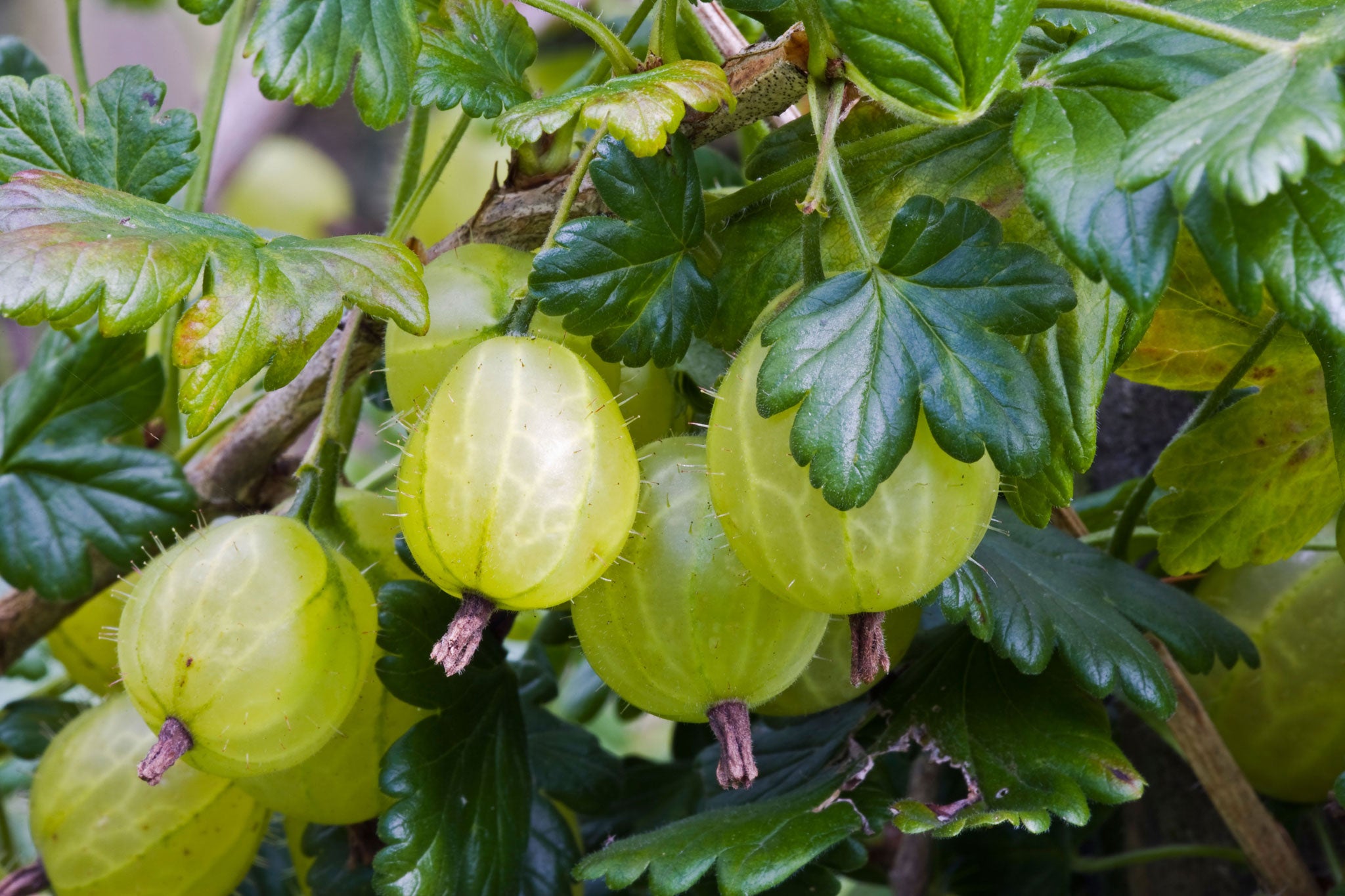Emma Townshend: I've been turned on to the taste of tart and tangy gooseberries

Polski Sklep is a sign we've got used to around our neighbourhood. The Polish shops induce a fierce curiosity in me: are other people’s national biscuits, yoghurt or cheese a massive improvement on our own?
And one of our local Polski Skleps specialises in the kind of fruit and veg you definitely can’t get at the supermarket. Tiny pickle cucumbers the size of fingers, fresh and dark green and very hard. In late summer, it sells whole sunflower heads, complete with all the ripened seeds, ready for picking. And right now, it has baskets of firm gooseberries, so fresh they still have the stalks on.
Looking at them, I realise that the last time I knowingly ate a gooseberry, I was about eight. I was probably coaxed into it by an enthusiastic veg-growing grandparent, and in view of my Olympic-class sweet tooth, would have immediately vowed Never Again. They are sharp, tangy fruit, with a rich flavour and big unavoidable pips; pretty much all you don’t want when you’re eight.
Now aged 38 and a bit, though, I find it’s a different story as I decide to stop, mid-amble back from the Tube station, and gaze at the ripe gooseberries in the basket. These I want. Especially when, back at home, I have Mark Diacono’s gooseberry salsa recipe in A Year at Otter Farm waiting for me: cooked in vinegar with sugar, then infused with shallots, mint, chives and lime; Diacono suggests serving it with smoked mackerel. I obey. And then I am torn between weeping at what I’ve been missing, and doing air-punches at the idea that from now on, gooseberries are on the menu. Big time.
But if I’m going to develop a taste for them, I’m lucky to live near that Polski Sklep, because they’re not exactly big supermarket material. Gooseberries have suffered from the Great British Sweet Tooth – it’s not just me who’s been turning up my nose at that sour, tongue-tingling flavour. So on the principle that it’s always better to throw your home-growing energies into what you can’t get from the shops, what about planting a single bush?
Growing gooseberries is relatively simple: they are self-fertile, so one plant will do. They need relatively sunny, relatively good soil, but will still harvest in a bit of shade, as long as they aren’t overhung by anything else. The pruning is the complicated bit – you’ll only get fruit on shoots from side branches that are two or three years old, so this requires some thought. (Diacono provides a clear pruning plan in his River Cottage Fruit Handbook.)
For varieties, I’m following the advice of Kelvin Archer, head gardener at Rode Hall, near Congleton, in Cheshire. Archer is one of a northern band of gooseberry aficionados who competes in local summer shows of great seriousness: until 2009, he held the world record for the biggest gooseberry ever grown. For garden growers Archer recommends “Leveller”, a yellowy-green gooseberry that gets the thumbs-up from other growers too.
One problem can be mildew, and the plants are best off growing in spots where the wind will keep up air flow across leaves, to minimise this. But the worst part of growing them, as I found out browsing the plants on sale at Wisley, are the thorns. Man, these guys require gloves. As a massive glove refusenik, in activities from washing-up to fruit-picking, this is a blow. But I’ll get over it in time, I’m sure. Gooseberries are a pleasure that shouldn’t just be for the Polish.
Yorkshire’s Egton Bridge Gooseberry Show will be held on Tuesday 5 August, from 2pm. For more: egtongooseberryshow.org.uk
Tongue tinglers: Four to try
'Hinnomaki Red'
A beautiful deep wine-red, and delicious. £9.50 for two-year-old plant, blackmoor.co.uk, which came top of Which? Gardening's 'Better Plants By Post' Survey 2013
'Invicta'
One expert gardener I know calls this sturdy mildew-resistant fruit her "insurance policy"; others prefer "a real star". £9.50 for two-year-old bush, blackmoor.co.uk
'Pax'
This red variety is the lazy person's variant – almost spine-free and mildew-resistant. Don't taste quite as good though. £9.50 for two-year-old bush, blackmoor.co.uk
Jostaberry
A hybrid between gooseberry and blackcurrants, with large, round bluey-black fruit that look like grapes. Thornless and disease-resistant. £6.99,
Subscribe to Independent Premium to bookmark this article
Want to bookmark your favourite articles and stories to read or reference later? Start your Independent Premium subscription today.

Join our commenting forum
Join thought-provoking conversations, follow other Independent readers and see their replies